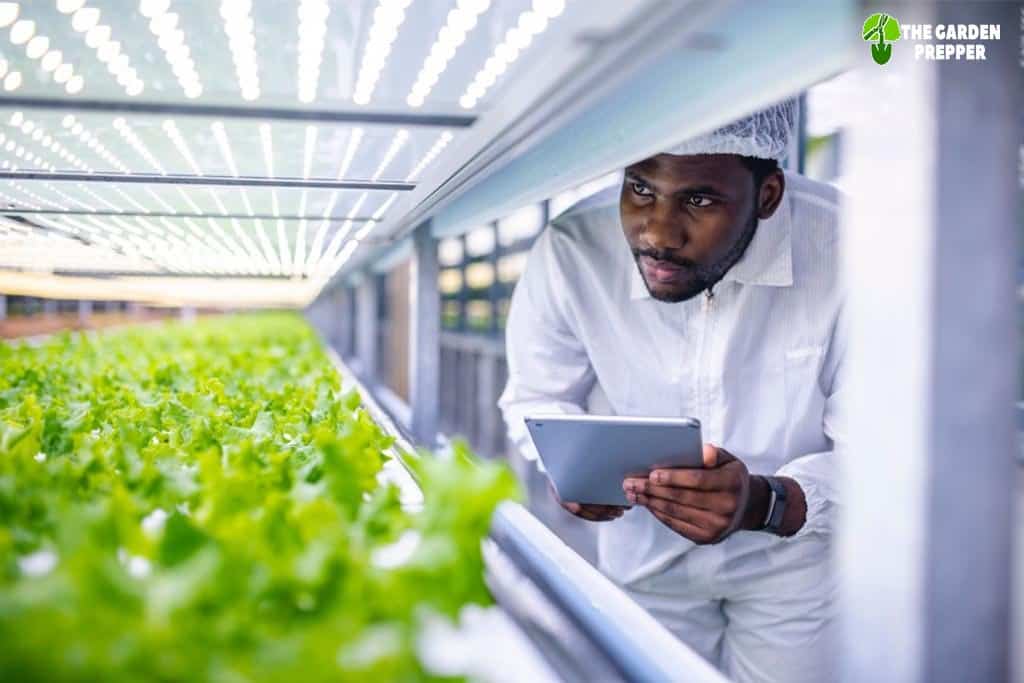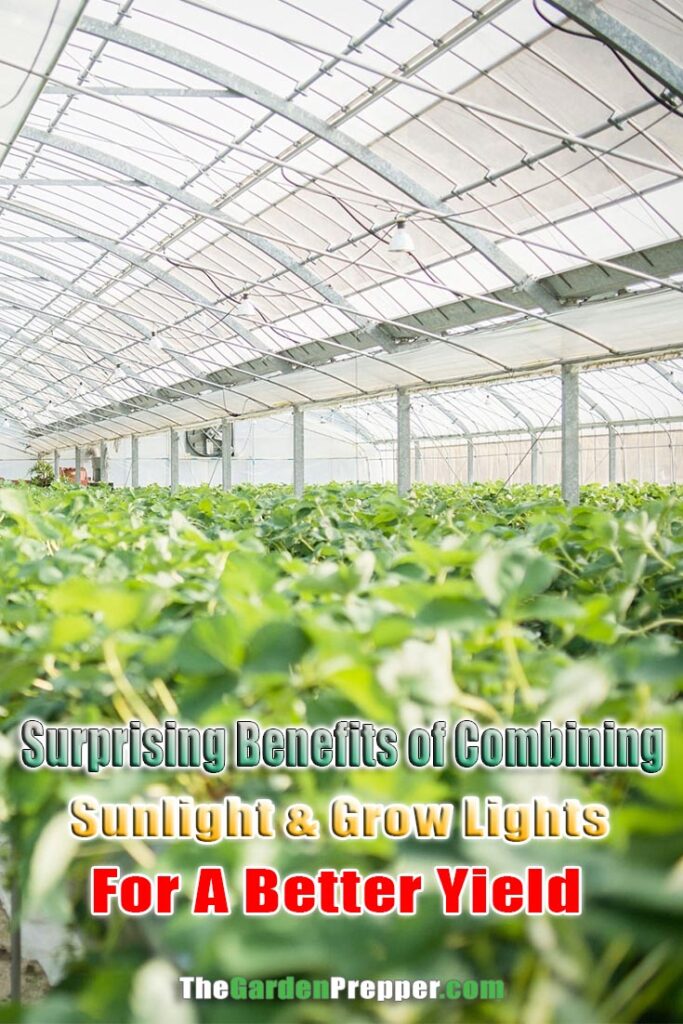Is combining sunlight and grow lights a good idea for your crops?
Or is it better to just stick to one method?
If you have been noticing a decline in your crop production, it is best to consider different techniques to help improve the situation.
This is why we encourage you to take a look at the possibility of boosting your yield by harnessing the power of the sun combined with the use of grow lights. How exactly does this work and what benefits will it offer to your crops? Let’s investigate!

Sunlight and Its Role In Plant Growth
First of all, let’s talk about chlorophyll in plants and the role it has in their growth and development.
In addition to giving plants that dark green hue, chlorophyll is responsible for photosynthesis. It is what gives life to plants by capturing sunlight and turning it into energy.
As a result, plants are able to produce oxygen and carbohydrate. These are key components that help them to grow.
However, if plants are not getting much sunlight, this is detrimental to their growth. This also impacts photosynthesis negatively, which is why they tend to get weaker and their growth becomes stunted.
On the other hand, if plants receive morning sun, the blue portion of the light spectrum signals the microscopic stomata to open. Hence, carbon dioxide is absorbed, which is an element used for photosynthesis.
Because of the key importance of sunlight’s ultraviolet radiation in many plant processes, including photosynthesis, researchers have studied how to further enhance plant growth.
This has led to the fact that choosing the perfect balance of luminous intensity and wavelengths can boost plant health. Moreover, these elements affect the plant’s light receptors that cause them to produce certain metabolites. These are molecules capable of producing scents or flavors, which are quite essential for fragrant herbs such as dill, peppermint, and basil.
So, if the quality of light is poor, this spells out disaster for the plant.
How can we create the right quality of light and in the precise amounts that plants need? And most importantly, how can this be possible to achieve without a significant wastage of energy?
Read more: Do Plants Need UVA or UVB? The Answers Here
How Grow Lights Work
When sunlight is scarce due to certain seasons in the year, it can help to use grow lights as supplemental lighting for your crops.
In fact, these supplemental lights are commonly used in greenhouses, combining sunlight and grow lights to produce impressive results.
This method uses the sun’s natural energy that powers up important plant processes while at the same time using light sensors and grow lights when sunlight supply is insufficient.
Read more: What Would Happen If a Plant Only Receives Green Light?
Benefits of Grow Lights To Crop Production
Supplemental lighting through the use of grow lights is key to outdoor and indoor farming. With the use of these artificial lights, it is ultimately possible to maintain crop production even during shorter days in the winter and unfavorable weather conditions.
These grow lights offer consistent and balanced light sources to crops. Since these lights are not turned on full power when the sunlight is still at its strongest intensity, this can help cut down costs.
At the same time, the lighting grids allow lights to spread out more throughout all the crops. With lights running for less and offering a better spread per square foot in the greenhouse, it is a practical choice to grow crops consistently year round.
Reducing Carbon Footprint
The most significant benefit of combining sunlight and grow lights in greenhouse growing is the reduction of carbon footprint.
Since you are only using grow lights when sunlight is not as strong, and you are mainly relying on the sun, it offers a greener and more eco-friendly way to grow your crops.
As a result, you are not only doing the environment a favor but you can also expect quality crops throughout the year – and with minimal production expenses. It’s a win-win!
When Is Combining Sunlight and Grow Lights A Necessity

At first glance, there are certain regions that are more suitable for greenhouse growing with the use of sunlight and grow lights. These include places that receive extreme weather such as wind, snow, and frost for several months in a year.
In the same way, there are areas that get too much sun year round, which can also benefit from grow lights.
But overall, sunlight and grow lights are useful in just about any greenhouse cultivation anywhere on the planet you may be.
Key Takeaways In The Use Of Sunlight And Grow Lights
There is no doubt that combining sunlight and grow lights offers impressive benefits not only in plant production but also to the environment.
The upfront cost, however, may be a bit steep, as well as the upkeep of using grow lights. For instance, it can cost $400 or so per double-ended HPS grow light at 1000 watts while LEDs can cost $800 for each unit.
A 10,000 sq. ft. warehouse that relies solely on grow lights may have allot a budget of about $12,000 for the monthly electric bill. But this is only the case with indoor gardening. Yet, the cost can be significantly reduced when you combine sunlight and grow lights. After all, you only use the latter when sunlight is weak.
By using both practices in growing crops, you can expect great benefits to your plants, production, and profits. It is all about striking the perfect balance and choosing the right grow lights that offer the best results for your crops.
